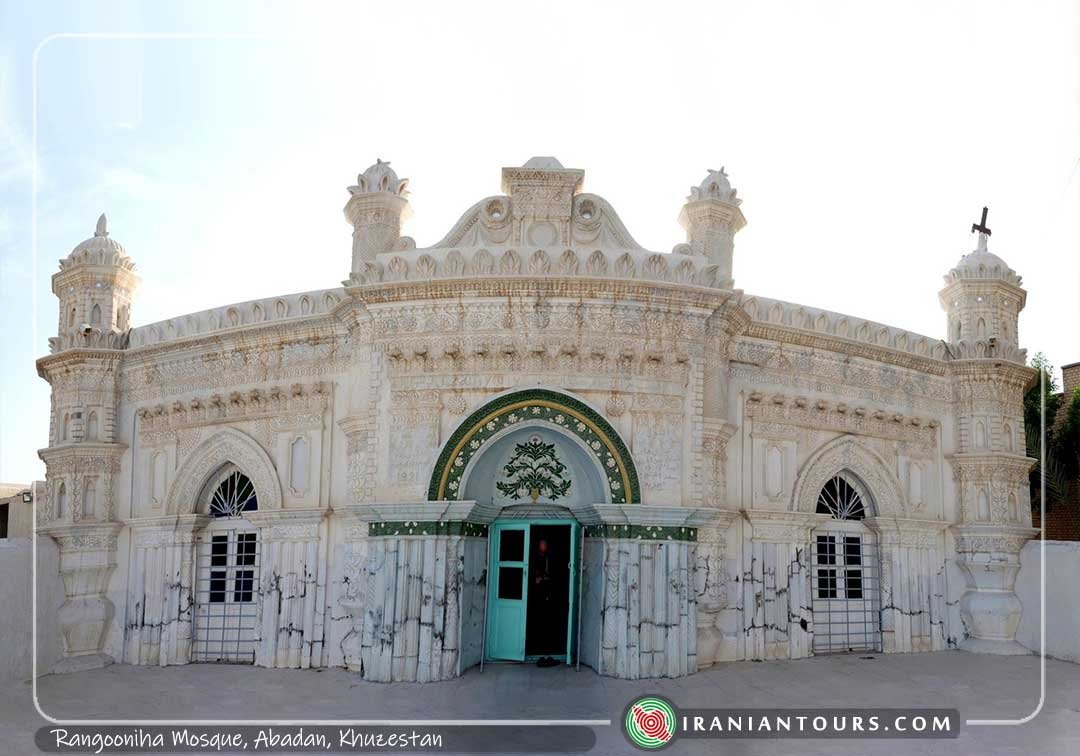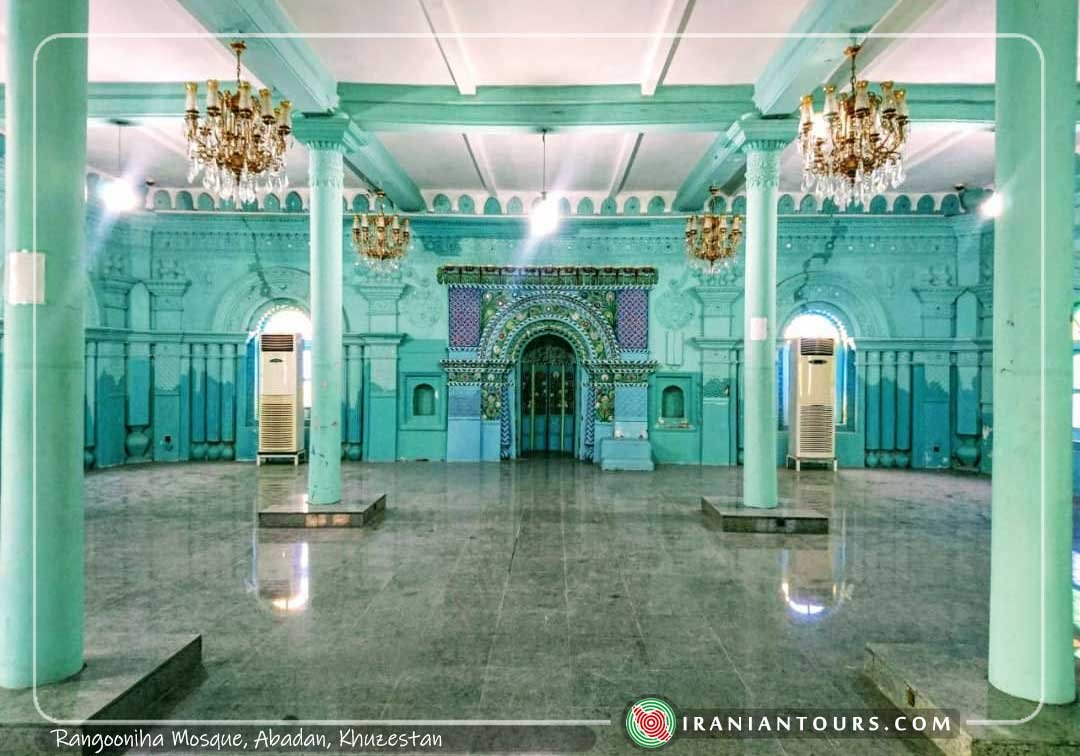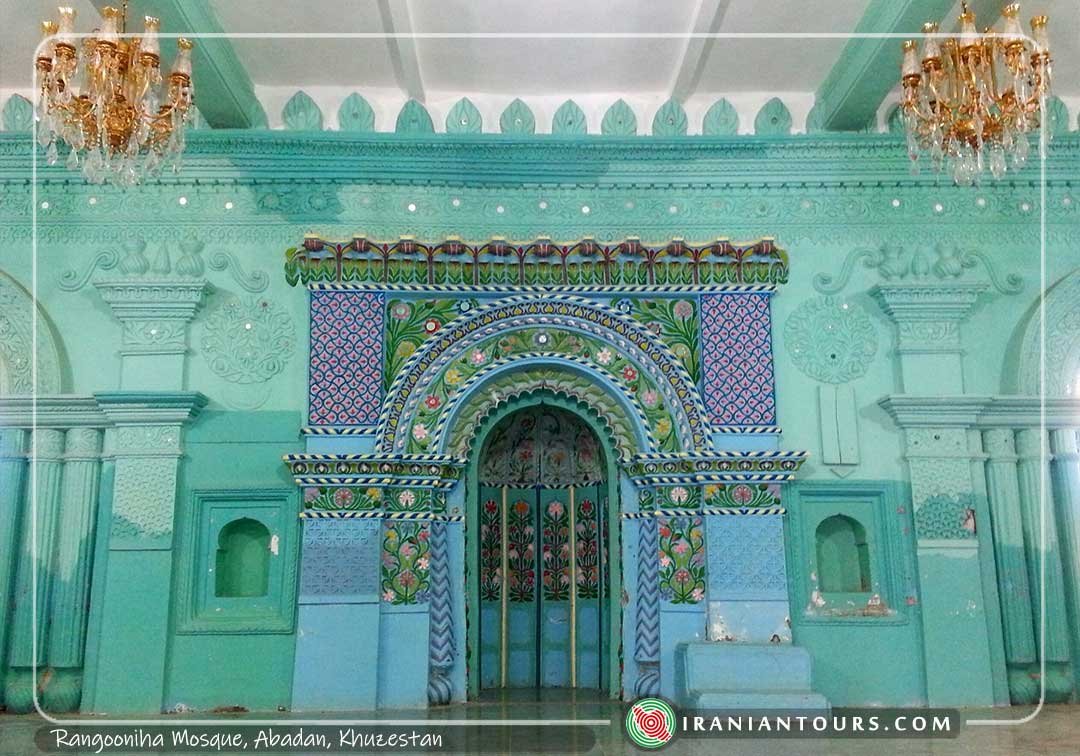Rangooniha Mosque
There is a mosque in the city of Abadan which has a roof of oil pipelines, rails, and rebar. Due to the adjacency to the refinery. Oil pipes play the role of the main beams and rails are ancillary beams.
Since Sunni Muslims of the Indian subcontinent who were mostly immigrants from Rangoon as the capital of Myanmar and have been working in Abadan oil refinery built this mosque, it was called Rangooniha. Rangooniha mosque of Burma (Myanmar) was built in the late Qajar and early Pahlavi periods.
The mosque is architecturally similar to Hindi temples adopted from the architecture of that area. The building has four small domes and two minarets. The exterior front of the mosque is decorated with cement in a specific style. It uses featured paintings and motifs in various colors. The use of mirrors in the decoration is an interesting point in this building. Because in Iranian architecture mirrors are used in decorations of palaces, tombs, and holy shrines. The mosque building was bricked with lime mortar and sturdy mud.
One of the distinctive features of the mosque is a flowery altar. It is decorated among hordes of geometrical shapes and arabesque motifs. Various colors and designs that are inscribed on the walls of the altar exhibited a symbol of paradise in the mosque. Another point in the construction of the mosque is the two air tunnels under the building that prevent penetration of land moisture to the bases of the mosque.
From January 2009, Rangooniha mosque, as a museum of historical documents and manuscripts, exposes copies of the Qur’an manuscripts and historical documents dating back to the Mid-Qajar up to the first Pahlavi king period to the visitors.




